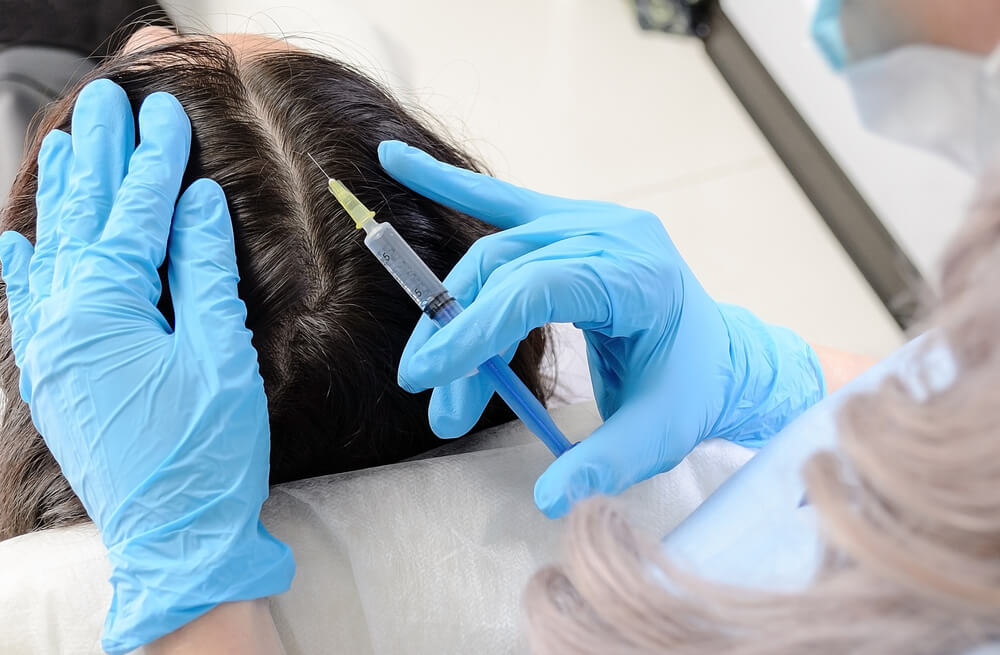
Do you have trouble growing hair and losing it constantly? Well, get ready to say goodbye to your hair woes because there's a new treatment on the block that's taking the world by storm - PRP stem cell hair treatment. Imagine a therapy that uses your body's own healing powers to rejuvenate your scalp and promote hair growth. This cutting-edge technique involves injecting platelet-rich plasma (PRP) combined with stem cells into your scalp, stimulating dormant follicles and encouraging them to produce thicker, healthier strands of hair. In this article, we delve into the science behind this revolutionary treatment and explore how it can help you achieve luscious locks once again.
Is PRP Stem Cell Hair Treatment Right for You?
PRP stem cell hair treatment has gained significant popularity in recent years as a potential solution for hair loss. As the name suggests, this therapy combines the principles of PRP (Platelet-Rich Plasma) and stem cells to rejuvenate the scalp and stimulate natural hair growth. Is it the right option for you?
One crucial factor to consider when contemplating PRP stem cell hair treatment is the underlying cause of your hair loss. Although this therapy has shown promising results for individuals experiencing androgenetic alopecia (pattern baldness), its effectiveness may vary depending on different types of alopecia. Additionally, if your hair loss is temporary due to factors like stress or medication, alternative treatments might be more appropriate.
It's also important to have realistic expectations regarding the outcomes of PRP stem cell therapy. While many patients report noticeable improvements in hair density and volume after several sessions, complete restoration is not always possible. Consulting with a certified dermatologist can help assess whether you are an ideal candidate for this treatment based on your unique circumstances and goals.
Remember that while PRP stem cell hair treatment offers a non-invasive approach to combatting thinning or receding hairlines, individual responses may differ. Exploring other available options such as medications or surgical procedures can provide additional perspectives before making a final decision about which path to follow in your journey towards regaining confidence through healthy-looking hair.
The Science Behind PRP Stem Cell Hair Treatment
PRP stem cell hair treatment has gained enormous popularity in recent years, and for good reason. This cutting-edge technique combines the power of platelet-rich plasma (PRP) with the regenerative potential of stem cells to promote hair growth, treat hair loss, and rejuvenate the scalp. But what is the science behind this revolutionary treatment?
The magic lies in PRP's ability to stimulate hair follicles and promote their growth. PRP contains a high concentration of platelets, which are rich in essential growth factors that play a vital role in tissue repair and regeneration. When injected into the scalp, these growth factors activate the dormant hair follicles, leading to enhanced blood flow, improved nutrient delivery to the follicles, and ultimately stimulating hair growth.
But it doesn't end there. The addition of stem cells takes this treatment to another level altogether. Stem cells are undifferentiated cells capable of self-renewal and differentiation into various cell types. In PRP stem cell hair treatment, mesenchymal stem cells derived from adipose tissue or bone marrow are combined with PRP before being injected into the scalp. These stem cells have the potential to regenerate damaged tissues, reduce inflammation around hair follicles, and prolong the anagen (growth) phase of hair strands.
Why PRP and Stem Cells? Exploring Their Role in Hair Restoration
PRP (Platelet-Rich Plasma) and stem cells are two groundbreaking techniques that have revolutionized the field of hair restoration. While both approaches have gained immense popularity individually, recent studies are shedding light on the potential synergy they can bring when combined.
PRP therapy involves injecting a concentrated serum derived from the patient's own blood into the scalp, rich in platelets and growth factors that stimulate hair growth. On the other hand, stem cell therapy utilizes a patient's own or donor-derived stem cells to regenerate damaged hair follicles and promote new hair growth. Individually, these treatments show promising results. However, when used together, their combined regenerative properties create an ideal environment for maximizing hair restoration outcomes.
Combining PRP with stem cells offers a unique advantage by providing both cellular regeneration and enhanced tissue healing in one treatment. The high concentration of growth factors found in PRP amplifies the effects of stem cell therapy by promoting tissue repair and supplying essential nutrients for optimal hair follicle health. Moreover, research indicates that this combination may extend the lifespan of newly transplanted hairs while improving their thickness and density.
Efficacy and Benefits: PRP Stem Cell Hair Treatment Unveiled
The advent of PRP (Platelet-Rich Plasma) Stem Cell Hair Treatment has taken the hair loss industry by storm. This revolutionary procedure involves injecting a concentrated dose of platelets and growth factors into the scalp, stimulating hair follicle regeneration and promoting new hair growth. But what sets PRP Stem Cell Hair Treatment apart from other hair restoration methods? One word: efficacy.
Research has shown that PRP Stem Cell Hair Treatment not only increases the thickness and density of existing hair but also leads to significant regrowth in areas where hair loss has occurred. This non-surgical solution harnesses the power of stem cells found within our own blood to stimulate dormant hair follicles and encourage natural regrowth. Not only does this treatment option provide fruitful results, but it also offers a myriad of benefits.
One such benefit is its natural approach to combating hair loss without the need for medications or invasive surgeries. By using one's own body as an enriching source, potential risks associated with allergic reactions or rejection are minimized. Additionally, since PRP Stem Cell Hair Treatment involves minimal downtime, patients can resume their daily activities almost immediately after each session - making it a convenient solution for those with busy lifestyles who may not have time for lengthier recovery periods often required by surgical procedures.






